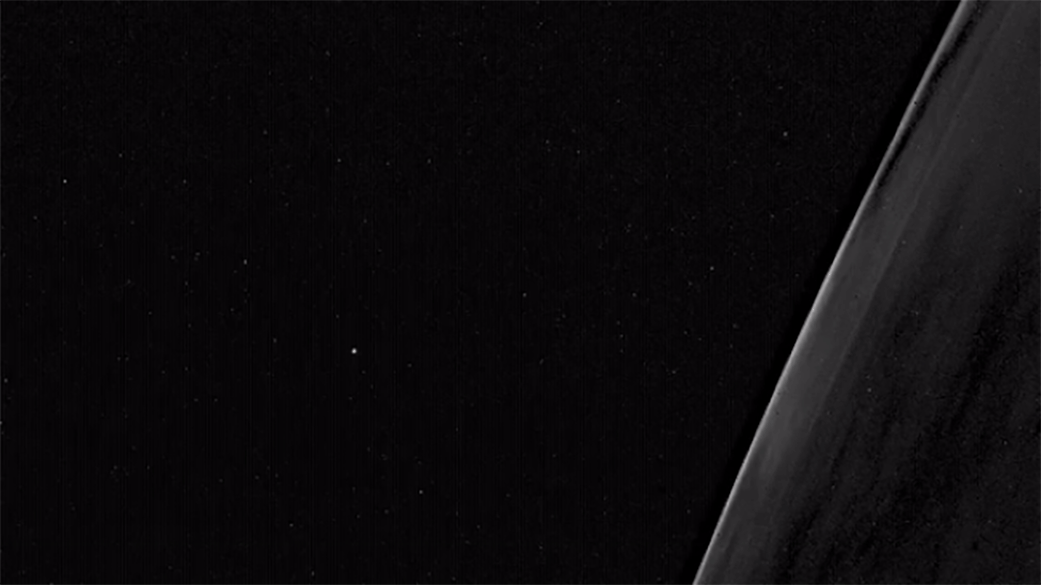Two NASA CubeSats teamed up on an impromptu optical, or laser, communications pointing experiment. The laser beam is seen as a brief flash of light close to the center of the focal plane, to the left of Earth’s horizon.
The light originated from the laser communications system onboard one of two Optical Communications and Sensor Demonstration (OCSD) spacecraft. The laser flash was recorded by a short-wavelength infrared camera, one of three cameras comprising the CubeSat Multispectral Observation System (CUMULOS) payload, onboard the Integrated Solar Array and Reflectarray Antenna (ISARA) spacecraft. At the time of the demonstration, the OCSD and ISARA spacecraft were both 280 miles above Earth and about 1,500 miles apart.
The optical communications beam was deliberately aimed at and swept across the ISARA camera. This demonstration shows that an optical crosslink between two CubeSats is feasible with proper pointing and alignment of the emitting and receiving spacecraft. Optimizing this capability could enable constellations of small satellites to transfer high volume data between one another in low-Earth orbit or even in orbit around the Moon.
“This success demonstrates that it is possible to build and operate satellite-to-satellite optical communications links in systems that are substantially smaller and simpler than what’s been considered in the past,” said Rich Welle, a co-principal investigator for NASA’s OCSD mission from Aerospace Corporation. “The future of space communications is optical, and this result can be the first step on a road to making optical communications ubiquitous in Earth orbit, even on the smallest satellites.”
Characteristics built into the design and operation of small spacecraft enable impromptu experiments such as this optical crosslink test. Their flexibility and responsiveness provide mission operators the ability to take advantage of opportunities to perform additional maneuvers and procedures not previously envisioned for a particular mission. Originally designed to be Earth facing, both the ISARA camera and OCSD laser were tipped onto their “sides” to point at one another to accomplish this additional crosslink achievement, an operation much more difficult for larger spacecraft.
Other features in this image include a star (R Doradus, one of the brightest infrared stars in the sky) that can be seen moving diagonally down toward the right side of the frame as the satellites orbit Earth, and Earth’s horizon as it meets space. Other subtle stationary points of white are ‘hot pixels’ or digital noise from the camera.
CUMULOS is an Aerospace Corporation experimental three camera remote sensing payload hosted on NASA’s ISARA small spacecraft mission, which was deployed to low-Earth orbit in December 2017. The ISARA mission is managed by NASA’s Jet Propulsion Laboratory in Pasadena, California. The OCSD spacecraft were developed and are operated by The Aerospace Corporation. The OCSD and ISARA missions are funded by NASA’s Small Spacecraft Technology (SST) program within the agency’s Space Technology Mission Directorate.
For more information on NASA space technology, please visit:



























